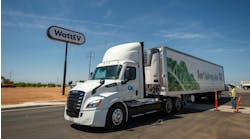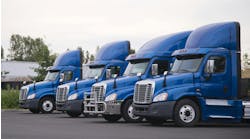The new EPA diesel engine emissions rules will take effect just weeks from now — and will bring with them many changes. In an effort to educate its customers on the changes, Shell Lubricants recently held a meeting in Seattle to field questions about operating and maintaining trucks with 2010-compliant engines.
On hand to answer those questions was Dan Arcy, Shell's OEM technical manager. Many of the questions centered on what happens if a driver fails to refill the diesel exhaust fluid (DEF) tank or simply fills it with water instead. If a driver lets the tank run absolutely dry, he or she can still drive 1,000 mi. on an engine de-rated to operate at 55 mph, Arcy explained. After that, once the truck speed drops to 5 mph or less, the driver will not be able to go any faster than 5 mph until the DEF is replenished.
Arcy also answered many other questions about DEF, from tank size (6-30 gals.), to the amount of DEF required (about 2 gal. per 100 gals. of diesel), to the type of storage container required (stainless steel or plastic, because the urea in DEF will corrode steel and aluminum over time).
Putting DEF into the fuel tanks, however, was another matter because the smaller DEF nozzle will fit into a fuel tank. “DEF is 67.5% water, so you really don't want that in the fuel tank,” Arcy cautioned.


